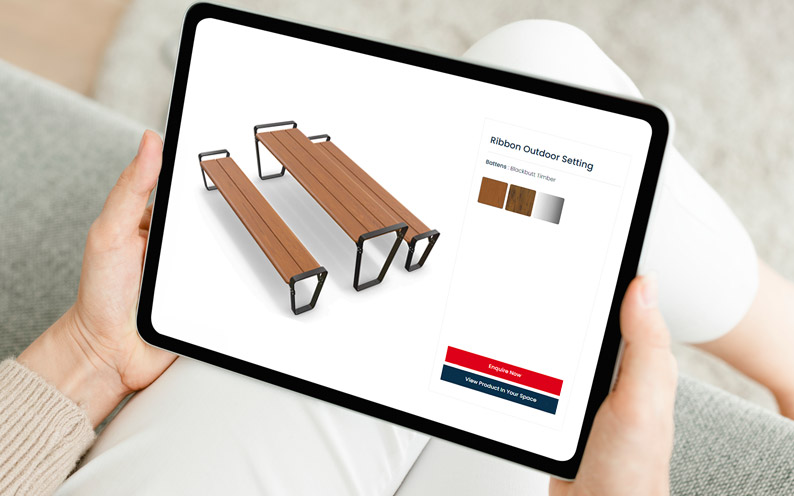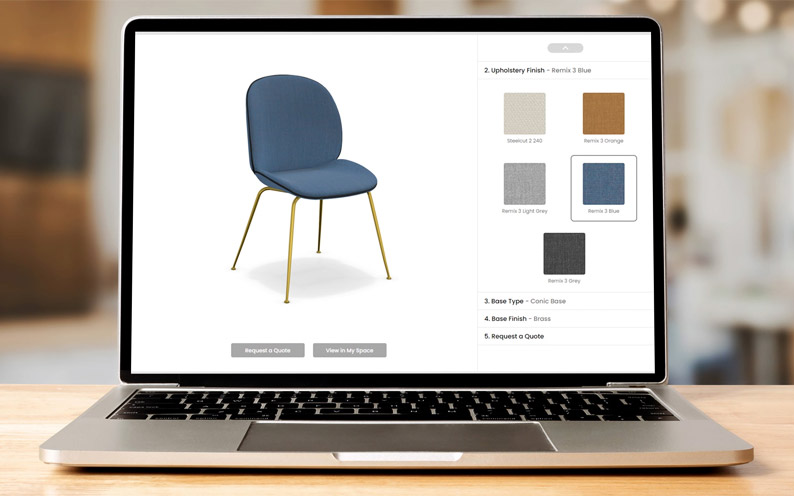Why 3D Product Visualisation Is The Future Of Ecommerce
- TRAQ Modular Configurator Creates Limitless Design Possibilities - April 15, 2024
- StraBe Releases Spencer Modular Outdoor Bench Configurator - April 3, 2024
- How a Room Planner Helps You Sell More Products - January 23, 2024

Imagine shopping online and being able to vew any product from any angle, from the comfort of your home? This is the future of 3D product visualisation – one of ecommerce’s latest trends. It’s an exciting technology that is a win for retailers and online shoppers, bringing them closer to the bricks and mortar experience they are familiar with.
So what is 3D product visualisation and how does it work? How are 3D products changing digital commerce?
What Is The Future Of Ecommerce

There is little doubt that ecommerce has evolved significantly since the early days and it accelerated significantly during the COVID-19 pandemic.
According to Statista, the value of the global ecommerce market was $1.53 trillion in 2017 and is estimated to reach $6.53 trillion by the end of 2027. The trends forecast that by 2040, 95% of purchases will be made online. Today’s digital landscape is setting the foundations for an ecommerce powered future.
To be competitive in the current climate, B2B and B2C companies need to implement customer-centric sales strategies, improve online customer experience and use technology that will better engage their customers.
Artificial intelligence (AI) is taking the ecommerce industry by storm, represented by chatbots, virtual agents and smart recommendation algorithms. These AI plugins can use vast amounts of data to answer questions with accuracy, suggest related products based on shopping habits and make the online shopping experience feel more personalised.
Additionally, an ecommerce trend helping retailers showcase their products is 3D product visualisation and product configurators. These ecommerce tools enhance the buying experience and give greater purchase confidence, allowing customers to configure options, see how products look in their home and increase sales.
What Is 3D Product Visualisation
3D product visualisation is the result of creating realistic 3D models and materials to mirror a real product. This technology is most effective when 3D products are created accurately – there’s little point onboarding your products into 3D unless they look close to the real thing – and the technology can be seamlessly integrated into your website via a 3D product viewer.
3D product visualisation allows customers to interact and understand your product features, at the same level as they would in a physical store. It allows them to explore products from any angle in a similar way to picking it up instore or physically walking around it. Adding 3D product visualisation can increase customer purchase confidence, decrease returns and reduce cart abandon levels. According to online statistics, up to 22% of online shoppers may return a product if it is not what they expected. This can happen when a retailer has insufficient or low quality photos of a product online.
Why Is 3D Product Visualisation Better Than Photos

The human mind is capable of processing images 60,000 times faster than reading text, so there is little wonder that most shoppers consider high-quality images to be more important than text descriptions. This means that your product visuals need to be in good shape, providing as much detail as possible to convince shoppers to purchase.
Prior to the internet, customers relied on catalog and magazine photos to discover products. Websites then provided an improved experience, featuring photo galleries and an easy way to click and purchase. Today, 3D product visualisation sets a new benchmark, allowing customers to view and interact with products in 360 degrees. It provides the best shopping experience available, increasing purchase confidence and bridging the gap between online and a physical store.
What’s The Difference Between 3D Visualisation & 3D Product Configuration
While 3D product visualisation generally displays a single product in 3D and Augmented Reality, product configuration enhances the shopping experience even more. 3D Product configurators allow shoppers to customise their products in real time, to visualise different materials and options with the tap of a button. Essentially, 3D product visualisation and 3D product configuration can be combined to provide a more effective shopping experience for customisable products.
Why Is 3D Visualisation Important For Ecommerce

According to studies, ecommerce retailers have less than a minute to capture customer attention before they leave and visit a competitor website. Product pages need to engage customers like never before, with hundreds websites competing for business. This leads to another key benefit of 3D product visualisation – it instantly provides an exciting, interactive online shopping experience, where customers can see your products from any angle, select options and try them in their home via Instant AR.
Let’s drill further into how 3D product visualisation can help ecommerce businesses increase sales, enhance their marketing and save money:
Improving Sales & Customer Retention
Without 3D visualisation, customers are relying on your product photos to make a decision to purchase. If you have low quality imagery, only a single photo or do not provide photos from various angles, customers can hesitate and not proceed with a purchase. Consequently, if your competitors have better imagery and provide an improved shopping experience with 3D visualisation, they will have a significant advantage and provide a more memorable shopping experience for customer retention.
3D Product Visualisation Adds Value & Creates An Emotional Connection

When customers purchase online, 3D product visualisation and product configuration have the ability to create an emotional marketing connection. According to a global ecommerce report, highly engaged customers can spend up to 60% more for products they customise and experience via a 3D visualisation tool. Personalisation is a key factor, allowing them to explore multiple options and find the best one that aligns with their personal style. This is important in industries such as furniture, home decor, fashion, appliances and automotive, where customers will pay more to customise to meet their requirements.
3D Products Can Streamline Marketing & Reduce Costs

Retailers require an ongoing source of product marketing photos for social media, digital marketing and email newsletters. Organising photo shoots can be expensive and time consuming, requiring a eye-watering budget for photographers, stylists, transportation of products, rental locations and more.
3D product visualisation can save time and money by allowing retailers to leverage 3D products across different marketing channels and customise the material to suit their campaigns. For example, 3D products can be utilised to create photo-realistic product lifestyle renders, generate product gallery images in any material and create custom marketing assets on any background. This process doesn’t require physical products to be referenced and new marketing assets can be created at any time by staff with design skills.
3D Products Can Enhance Your Social Media
Social commerce is a huge market that leverages social media to attract new customers and sales. High quality and engaging product visuals will inspire customers to share your product imagery with others on social media and can create lucrative organic exposure. 3D products can be used to rapidly create social media marketing material, allowing you to snapshot them from any angle, combine with other products and create exciting visual compositions that help your brand stand out.
3D Visualisation Can Be Combined With Augmented Reality
Once your products are in 3D, they can be converted to high quality Augmented Reality and enable customers to realistically try them in their home. AR is an engaging ecommerce technology, that completes the sales cycle by giving customers greater purchase confidence. It allows them to visualise products in their home and outdoors, with realistic dimensions and materials. They can see which style will best suit their interior, position it anywhere in their room and find the correct size for their space.
3D Visualisation Is Easy To Implement
Getting started with 3D product visualisation is a straight forward process and most retailers can onboard their most popular product ranges in a couple of months. Onboarding your products only requires 3-4 product photos and can be fast tracked if you have 3D CAD files. Once a 3D model is created, you can rapidly apply many different materials, allowing you to showcase every style on your website. This can significantly streamline and enhance your sales process if you sell highly customisable products.
Harness the Power of 3D Product Visualisation
If you are looking for a powerful customer-focused solution to increase sales, streamline marketing processes and generate more customer engagement, 3D product visualisation is the solution. It can be implemented on any ecommerce website and combined with 3D product configuration and Instant AR to supercharge your online shopping experience.




